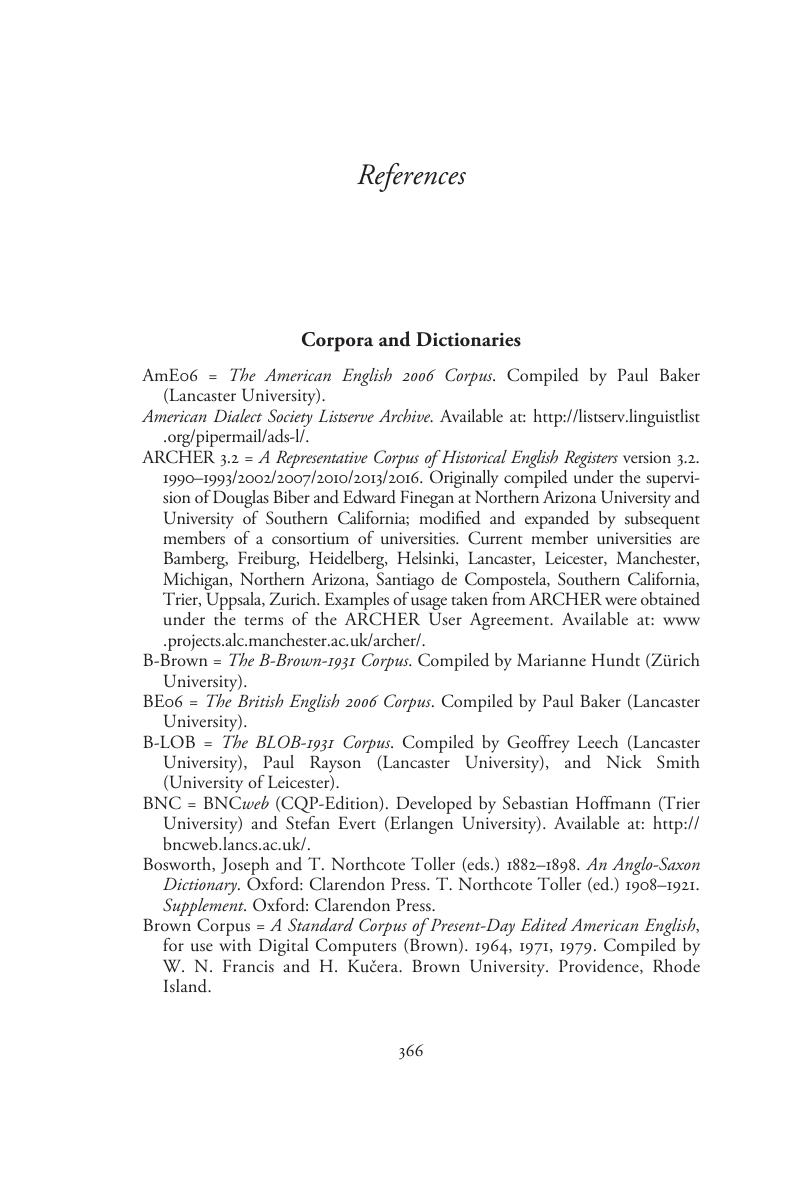Book contents
- Categories, Constructions, and Change in English Syntax
- Studies in English Language
- Categories, Constructions, and Change in English Syntax
- Copyright page
- Contents
- Figures
- Tables
- Contributors
- Acknowledgements
- Introduction: Analysing English Syntax Past and Present
- Part I Approaches to Grammatical Categories and Categorial Change
- Part II Approaches to Constructions and Constructional Change
- Part III Comparative and Typological Approaches
- References
- Index
- References
References
Published online by Cambridge University Press: 07 October 2019
- Categories, Constructions, and Change in English Syntax
- Studies in English Language
- Categories, Constructions, and Change in English Syntax
- Copyright page
- Contents
- Figures
- Tables
- Contributors
- Acknowledgements
- Introduction: Analysing English Syntax Past and Present
- Part I Approaches to Grammatical Categories and Categorial Change
- Part II Approaches to Constructions and Constructional Change
- Part III Comparative and Typological Approaches
- References
- Index
- References
Summary

- Type
- Chapter
- Information
- Categories, Constructions, and Change in English Syntax , pp. 366 - 398Publisher: Cambridge University PressPrint publication year: 2019



